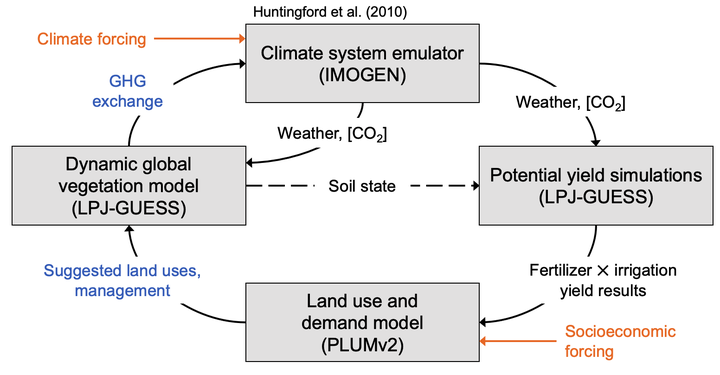LandSyMM

How is climate change going to affect crop productivity in different regions? What about pasture and rangeland? Where will agriculture expand and contract in response, and how will the management of those lands change? What about when we also consider changing commodity demand due to increasing population and socioeconomic development? How will all this affect the natural world?
These are the kind of questions that are really well-suited to exploration using global models. My collaborators and I use the Land System Modular Model (LandSyMM), which is a system comprised of several sub-models, for just this purpose.
At every time step in the simulation, the LPJ-GUESS vegetation model generates estimates of crop productivity under a few different combinations of irrigation and fertilization, as well as pasture grass production. The PLUM land-use model then combines these with estimates of commodity demand to generate maps of land use and management in the next time step (Alexander et al., 2018). These are fed back into LPJ-GUESS, which simulates agriculture and natural ecosystems, allowing us to evaluate impacts of climate and agricultural change on ecosystem services (Rabin et al., 2020). The land-use change maps have also been used by themselves to assess risks to biodiversity (Henry et al., 2019).
We are moving LandSyMM toward a fully-coupled system in which PLUM and LPJ-GUESS will not only interact more directly with each other, but also with the climate emulator IMOGEN. This will allow us to explore land-climate feedbacks, which can have significant effects on the future evolution of the Earth system.
We are also working on adding a timber and carbon module, which will not only improve the realism of LandSyMM by representing an important additional land use pressure, but will allow us to answer questions related to the potential of land management as a climate change mitigation strategy.



